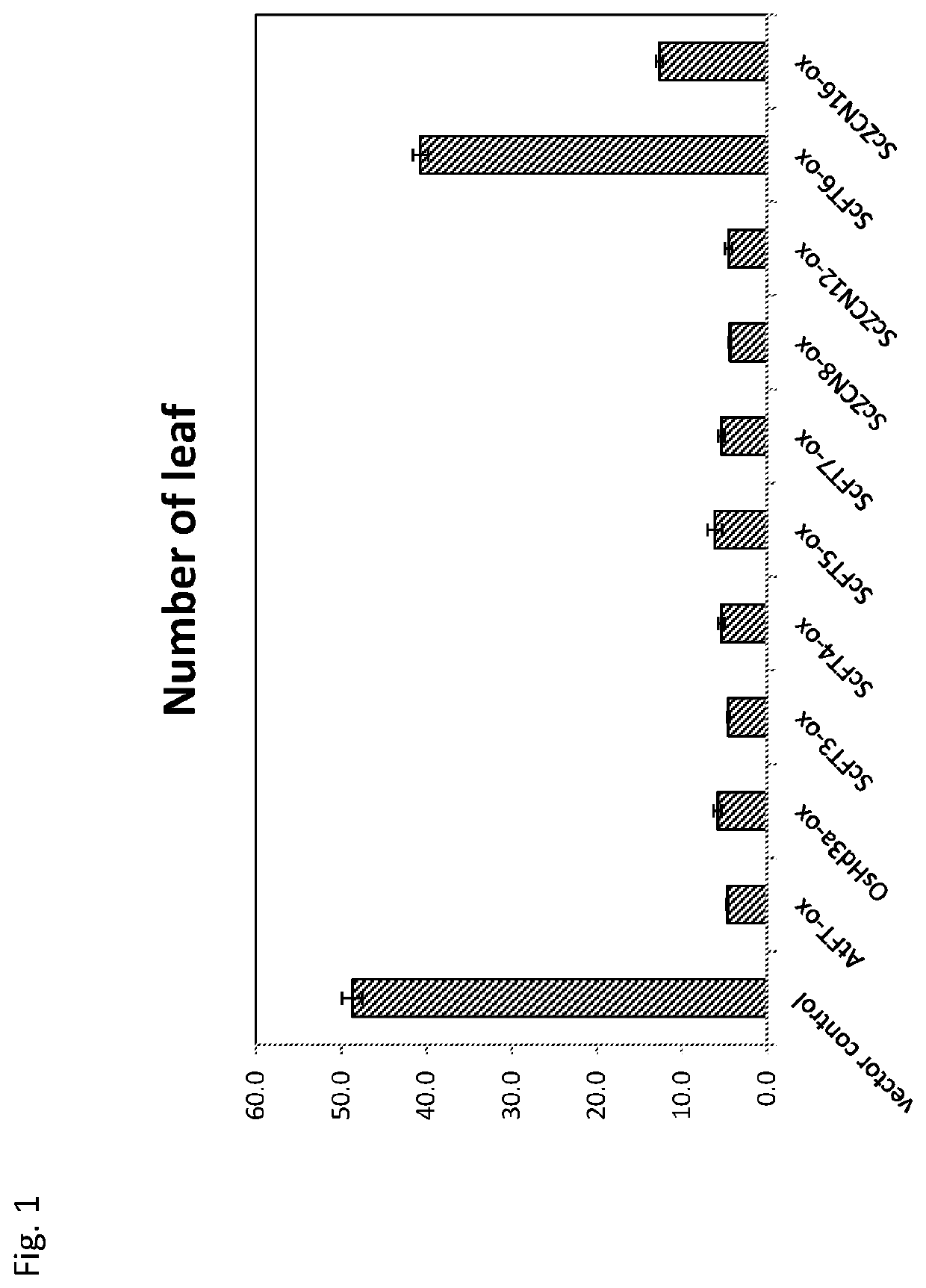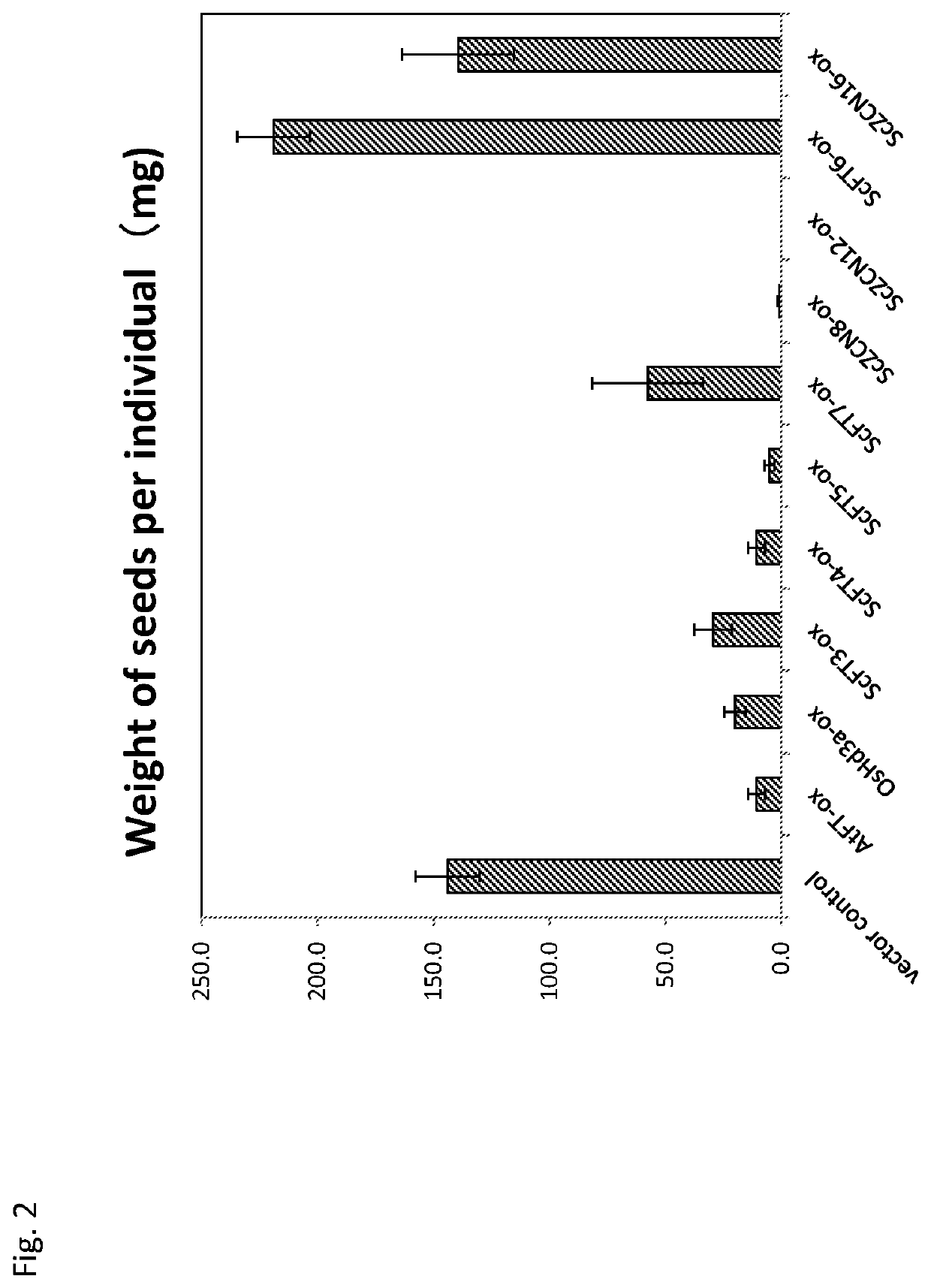Transformed plant and flowering regulation method using flowering-inducing gene
a technology of flowering and gene, applied in the field of transgenic plants and flowering regulation methods, can solve the problems of difficult to carry out desired crossing, decrease in the amount of seeds that can be harvested, and take a long time to develop one cultivar, so as to promote flowering more slowly, sufficient seed yield, and flowering time accelerated
- Summary
- Abstract
- Description
- Claims
- Application Information
AI Technical Summary
Benefits of technology
Problems solved by technology
Method used
Image
Examples
examples
[0063]The present disclosure will be described in detail with reference to the Examples below. However, the scope of the present disclosure is not limited to the Examples.
[0064][FT Family Genes in Sugarcane]
[0065]In the Examples, a gene (flowering-inducing gene) encoding a florigen defined as a signal substance that induces flower bud formation in sugarcane plants were searched for. FT (FLOWERING LOCUS T) family genes that function as florigen genes have been identified for Arabidopsis thaliana and rice (see references listed at the end of the Examples: Kobayashi et al., 1999; Kardailsky et al., 1999; Corbesier et al., 2007; Tamaki et al., 2007; Komiya et al., 2007). However, no FT gene that promotes flowering induction has been identified in sugarcane (Coelho, 2013; Coelho et al., 2014). Therefore, in the Examples, in order to identify florigen genes (flowering-inducing genes) involved in flowering induction in sugarcane, sugarcane FT family genes were searched for in the existing ...
PUM
| Property | Measurement | Unit |
|---|---|---|
| length | aaaaa | aaaaa |
| length | aaaaa | aaaaa |
| temperature | aaaaa | aaaaa |
Abstract
Description
Claims
Application Information
 Login to View More
Login to View More - R&D
- Intellectual Property
- Life Sciences
- Materials
- Tech Scout
- Unparalleled Data Quality
- Higher Quality Content
- 60% Fewer Hallucinations
Browse by: Latest US Patents, China's latest patents, Technical Efficacy Thesaurus, Application Domain, Technology Topic, Popular Technical Reports.
© 2025 PatSnap. All rights reserved.Legal|Privacy policy|Modern Slavery Act Transparency Statement|Sitemap|About US| Contact US: help@patsnap.com



